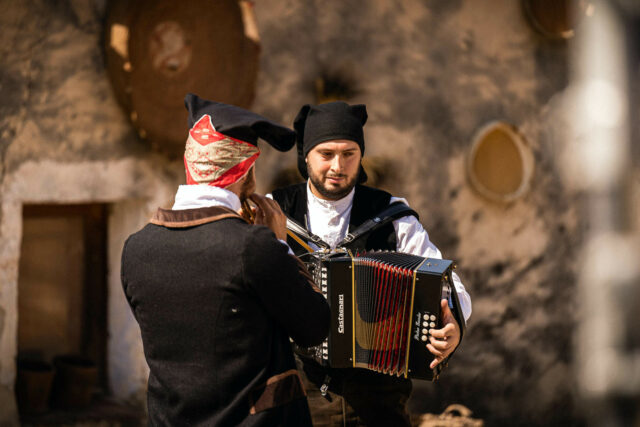
La rassegna estiva
12 06 2023
Ecco la programmazione de La Terra delle Donne per questa settimana. *Più le nostre rassegne estive da qui al 5 luglio!

22 02 2023
An ancient Mediterranean legend tells of Athena and Poseidon who challenged each other to offer the most beautiful gift to the people, Zeus would have been the judge of the competition between the two powerful deities. Poseidon, created the most powerful and fastest horse, capable of winning all battles. Athena, on the other hand, gave birth to a beautiful tree from the earth, which healed wounds, cured diseases and offered nourishment, giving well-being and peace to all the people who would cultivate it. Zeus enraptured by the beauty of Athena's gift, blessed the leaves saying: "You gave men the olive tree and with it you gave light, food and an eternal symbol of peace".
The olive tree was already present in Sardinia in spontaneous wild forms already at the time of the Phoenicians and Greeks who arrived in Sardinia, which, given its geographical position, became a crossroads for trade. Therefore, olive trees have always been an essential part of the Sardinian territory.
The oldest millenary olive tree in Italy, nicknamed "The Patriarch of Nature", is over 4000 years old and is located in Gallura in the municipality of Luras in the province of Olbia Tempio. According to many experts, it is one of the oldest in all of Europe. The Luras olive tree is known on the island as Grandhe donnumannu, "the great grandfather". It was an impressively sized plant with a crown exceeding 20 meters in diameter and 14 meters in height. Burnt down in a devastating fire in 2021, it seemed destroyed, but thanks to massive international scientific collaboration efforts it was saved by donating new shoots in the spring of the following year.
The cultivation of the olive tree is present in almost all the municipalities of the island, with particular areas of concentration such as the Cagliari area, the Sassari area (especially in the area between Alghero and Sassari and the Oristano area. The average production of olives in Sardinia is almost entirely dedicated to the production of oil.There are over 28 varieties grown in Sardinia, the main ones being Bosana, Pizz'e carroga, Majorca, Semidana, Nera di Oliena, Tonda di Villacidro and Tonda di Cagliari, each with its characteristics and flavour.The Protected Designation of Origin indicates that 80% must come from the Bosana, Tonda di Cagliari, Tonda nera di Villacidro and Semidana varieties.The remaining 20% may include the uncommon or typical Sardinian varieties but cultivated on the territory of the island.
To date, there are more and more island producers who concentrate their research on monovarietal oils obtained from typical local produce with the aim of enhancing the particularities of Sardinian oil and safeguarding the island's olive-growing heritage.
Comments
Accedi per lasciare un commento- Facebook